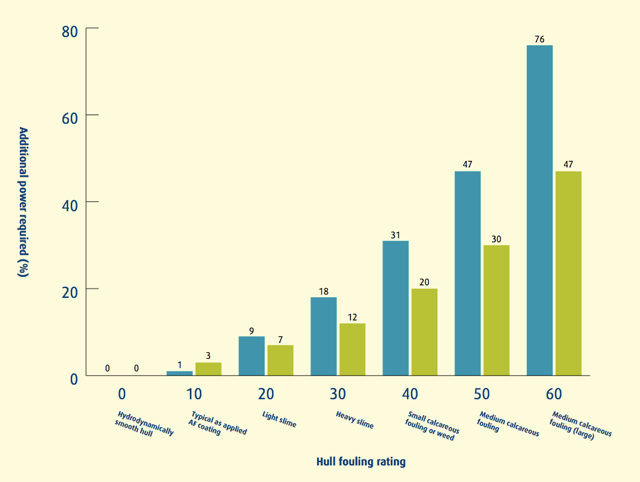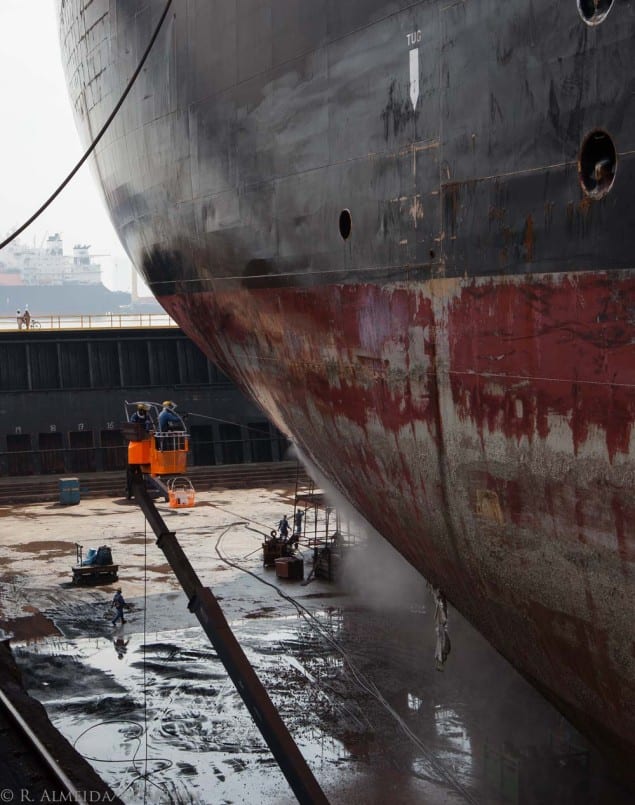UK Strikes at Heart of Russia’s Arctic Energy Empire
New maritime services ban threatens to sever lifeline for Yamal LNG exports By Paul Morgan (gCaptain) – In the frozen waters above the Arctic Circle, a fleet of specialised ships...
With ship operators intensely focused on maximizing efficiency, keeping the hull clean is a major consideration as marine growth will most definitely lead to significant frictional drag and subsequently higher fuel bills.
As documented by Dr. Michael Schultz, Department of Naval Architecture and Ocean Engineering at the United States Naval Academy, a heavily fouled hull can carry a ‘fuel penalty’ of up to 80%.

Divers, or drydocking, have traditionally been the solution, but in either case, the ship will have to go off hire for an extended period of time because neither is a quick option.

In the case of divers, hull cleaning operations can only happen during the day and outside of most ports due to the resultant pollution from the paint loss which can be nearly a third of the entire coat.
There is however a third option for ship operators.
Developed by Dubai-based GAC and Notodden, Norway-based inventor Robert Andersen, the HullWiper system is the world’s first remotely operated vehicle (ROV) hull cleaning machine.
GAC says that 150 ships were cleaned using this system last year which can operate 24 hours a day and can clean upwards of 2,000 m² per hour, or roughly 5 times faster than divers. In 2015, the company is anticipating 400 to 500 ships will take advantage of this system.
GAC says that utilizing the HullWiper ROV will admittedly cost an operator around 3 times as much to clean their hull as compared to divers, but considering that a barely measurable 6 to 8 microns of paint is removed in the process, the realized cost is likely at least 50 percent less than if divers were used.
In addition, this system can be utilized around the clock and in port which results in zero down time for hull cleaning operations.
Christer Sjödoff, Group Vice President Commercial at GAC says that the discharge water during cleaning operations can actually be cleaner than the surrounding water as this system will capture particles as small as 20 microns. “There are 4 high pressure water nozzles on each of the three cleaning disc’s that spin at 450 rpm. The resultant Venturi Effect keeps the HullWiper next to the hull and provides a vacuum that ingests 8 times as much water than what is being discharged from the nozzles. This water then enters the vehicle where it is purified before being released from the vehicle,” says Sjödoff.
All of the captured particles are stored on board the vehicle and disposed of ashore.

Sign up for gCaptain’s newsletter and never miss an update

Subscribe to gCaptain Daily and stay informed with the latest global maritime and offshore news
Essential news coupled with the finest maritime content sourced from across the globe.
Sign Up